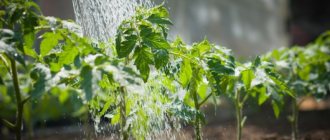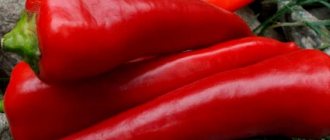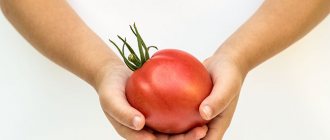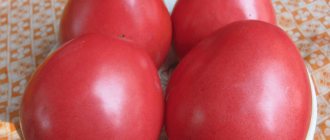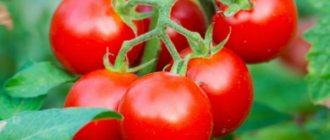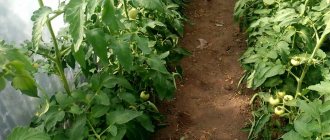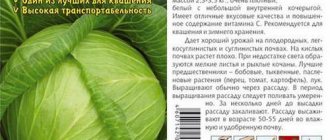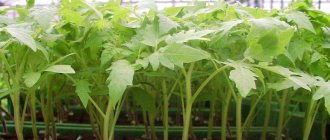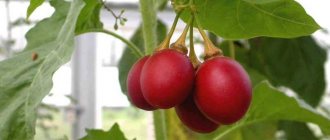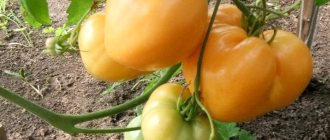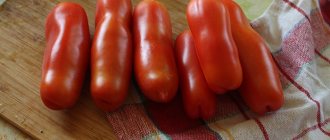Cucumber Amur is a hybrid variety. It was bred by the breeding and seed company Manul. Since 2000, the variety has been included in the State Register of the Russian Federation. Private gardens and small farms in any region are suitable for its cultivation. This variety has many advantages and high yield.
cucumber seeds of the Amur variety
Cucumber belongs to the bunch type of fruiting
Ripe cucumbers Amur
Description of the cucumber variety
The Amur cucumber is an ultra-early hybrid - fruiting begins on the 37-40th day after emergence. The plant can be cultivated both in open and protected ground (greenhouses).
The Amur cucumber is a parthenocarpic plant, that is, it has a female type of flowering. This is a vigorous, indeterminate crop - stem growth is not limited. The plant is characterized by very weak branching, which practically eliminates the need to form a bush. The formation of 1-2 ovaries per node is typical. Characterized by simultaneous filling of several fruits.
The leaves of Amur are medium in size and green in color, with a slight waviness of the edges. The fruits are characterized by an oval-spindle-shaped shape, slight wrinkles, small tubercles, and a short neck. They reach 12-15 cm in length and weigh on average 100 g.
The fruits of the crop are distinguished by dark green skin; the first third of the length is covered with weak longitudinal stripes of light color. The Amur variety is characterized by weak pubescence and the presence of white spines.
The main harvest is harvested in the first month of fruiting. 12-14 kg of cucumbers are harvested from one square meter. Fruit growth is characteristic along the entire length of the cane.
An important feature of the variety is self-regulating branching. Stepchildren appear only after the active growth of the main vine and the formation of the main crop.
Description of cucumber Amur
The cucumber variety Amur F1 is a parthenocarpic crop and does not require pollination. Therefore, it bears fruit well in open, protected ground or as a houseplant.
The hybrid bushes are vigorous, the branches are powerful, and they develop according to the indeterminate type. When formed on supports, the lashes easily support the weight of the crop. Early fruiting occurs on the central shoot. The main stem with filling cucumbers does not stop growing and does not produce lateral shoots. After the end of the first wave of harvest, short determinate shoots appear, on which several “bouquet” ovaries are formed.
The Amur cucumber variety does not require shaping, pinching, or constant tying. The bush self-regulates and does not grow in breadth. Amur's leaf blades are medium-sized, pubescent, with a classic green color for cucumbers. The edges of the leaves are smooth.
Advantages and disadvantages
Cucumber Cupid has many advantages:
- ultra-early ripening;
- no need for pollination;
- cold resistance;
- branching is self-regulating, there is practically no need to form a bush;
- bunch-type fruit formation;
- Fruiting is abundant and long lasting.
- short fruitfulness;
- excellent taste;
- resistance to many diseases;
- versatility in use.
The Amur variety also has some disadvantages:
The crop actively bears fruit only for a month, and if the harvest is not harvested on time, the fruits outgrow and lose their taste. The advantage of this variety in disease resistance has one nuance - this quality is manifested when a trellis is used for cultivation.
Soil requirements
Preparing the soil for growing Amur cucumbers must begin in the fall. It should be dug up and superphosphate added. Before planting in the spring, it is worth fertilizing the soil with rotted manure and wood ash.
After planting, mulching is effective. For this, peat (must be crushed) and sawdust are used.
Ultra-early ripening and high yield of the crop place a heavy load on the soil, which leads to its rapid depletion. You can avoid such trouble even at the seedling stage if you properly prepare mixed soil for it. It should consist of humus, peat, forest soil and sand. You need to mix them equally, and add 1 tbsp for every 10 liters. l. nitroammofoski and 3-4 tbsp. l. wood ash.
Rules for sowing seeds and planting seedlings
An important feature of the Amur variety is the fact that the seeds are sold already in processed form. This is evidenced by their colored shell. This treatment means that the seeds do not require pre-soaking or germination - they can be immediately used for planting in open ground or planting seedlings.
Amur is an early variety of cucumbers, so it can be planted in open ground. In this case, it is necessary to organize a temporary shelter - arcs with film or agrofibre. You can also use regular plastic bottles, covering the holes with improvised cups.
The crop can be planted in open ground immediately after the end of frost with seedlings, and seeds - at a temperature of 24 degrees. In the regions of the central zone, seeds must be planted before mid-June, and in the southern regions - before the end of the month.
The video below will tell you how to plant Amur cucumber seedlings:
The Amur cucumber can be planted not only in classic beds, but also on a compost heap, in bags, barrels, and boxes. To fill the container, use natural waste - fallen leaves, weeds, twigs, household waste. The top layer is garden soil and humus or compost. They need to be mixed equally.
Planting density depends on its method. In a greenhouse it is recommended to plant 3 bushes per 1 square meter. m, and in open ground - 4-5 plants. When using 200-liter barrels, plant 3-4 plants, and 1-2 in a bag.
If you want to get an early harvest, then you need to plant Amur seedlings. It is grown according to the following rules:
- sow seeds for seedlings a month before their planned planting;
- use separate pots or cups - plant 1-3 seeds in each container;
- for growing seedlings, it is recommended to use a ready-made mixture - its composition is maximally adapted and saturated;
- with several shoots, leave the strongest specimen in one container - the rest must be removed carefully so as not to damage the roots;
- To plant seedlings, the soil must warm up to at least 16 degrees.
When planting seedlings in open ground, it is recommended to sprinkle the sprout almost completely. This technique ensures the development of a powerful root system - the key to a bountiful harvest.
Preparing soil and seeds
When choosing a planting site, you should take into account the degree of illumination, the level of soil moisture and its heating. The first shoots appear at temperatures above 20°C and germinate well at 25°C.
Like all cucumbers, Amur F1 loves balanced, non-acidic soil, saturated with nitrogen, potassium and phosphorus. Therefore, we advise you to dig up the soil in the fall, after adding superphosphate to it. In the spring, before planting, we introduce wood ash, pouring it into the hole of each bush along with rotted manure. Potassium and nitrogen salts are washed out with water, so adding humus and ash in the fall will not have any effect. But in the spring they give a start to the development of the root system and green mass.
To obtain a good harvest, seed material is very important. We recommend that you germinate the seeds before planting. To do this, they are soaked for 12 hours in a bioactivator solution, the best option is a solution of Californian worm extract (Vermisol) or a solution of potassium permanganate. The drug Previkur showed good results. This measure not only provides the nutrients necessary for germination, but will also protect against root rot pathogens and increase the percentage of germination.
Before planting seedlings, seeds need to be germinated
The soaked seeds are placed on a soft cloth, richly flavored with moisture, and placed in a warm, well-lit place. If you live in an apartment, we recommend placing the container with the seeds under the kitchen ceiling; as a rule, this is the warmest and most humid place. When sowing in the second half of February, provide additional lighting, this will give an additional impetus to the development of the plant.
Illuminating seedlings provides the plant with a blue and red spectrum of light, as a result the sprouts become green and do not get sick.
Care after landing
Cucumber Cupid is quite unpretentious in care. It consists of the following activities:
- Watering . It should be abundant during active fruiting and on dry days. No more than 20 liters of water are needed per square meter; sprinkling is effective during drought when solar activity is minimal. The water should be heated to 25 degrees.
- Feeding . It is recommended to apply fertilizer at least 2-3 times. Effectively use complex formulations. The first feeding is necessary at the beginning of flowering, then it is repeated at intervals of 1-1.5 weeks. It is good to use special mixtures for fertilizing: BioHumus, Agricola, Zdraven. Green fertilizers are also effective - fermented infusions of weeds (usually nettle is used). The infusion must be diluted in 5 parts of water. For one bush, it is enough to add 1.5-2 liters of this solution.
- Bush formation . The first removal of inflorescences is required even before the development of 5-6 true leaves. To tie the lashes, it is necessary to organize vertical supports - there are many ovaries, so stems that are not tied may not withstand the load.
How to achieve a generous harvest?
The standard duration of fruiting of the Amur is a month. At this time, sufficient watering and regular feeding are needed.
It is important to remember the recommended water temperature for irrigation. If it is too cold, fruit growth will slow down and the risk of disease will increase.
Diseases affect the qualitative and quantitative characteristics of the crop. It is necessary to carry out their prevention in a timely manner.
The duration of harvesting can be increased if the conveyor method is used during planting. This means that the crop must be planted not in one day, but at certain intervals. The effect will be if a month is allowed between the first and last planting.
Diseases and their prevention
Amur is characterized by high resistance to various pests and diseases, but certain factors can provoke such problems. It is important to carry out their prevention in a timely manner, and, if necessary, treatment.
Diseases may be the following:
- Cladosporiosis . The disease manifests itself as rapidly growing dark brown spots on leaves and fruits. The cause is the remains of diseased plants in the soil. For prevention, Bordeaux mixture and special preparations are used.
- Powdery mildew . This fungal disease is expressed by the appearance of a white coating on the surface of the leaves, followed by yellowing and drying. The reason usually lies in cloudy and cold weather. For treatment and prevention, fungicides and colloidal sulfur solution are used.
- White rot . This disease is also called sclerotinia. It manifests itself as gradually darkening and spreading white spots on the stems or leaves, and their rotting. Prevention is to plant bushes at a sufficient distance, remove affected parts of plants, treat the soil with lime and crushed coal.
- Ants . These insects are beneficial, but can bring aphids or damage the root system of the crop. You can get rid of them by treating the soil with boiling water, pouring kerosene into the anthill, or using special traps.
- Whitefly . Insect larvae feed on plant sap and therefore harm them. For prevention, you need to loosen the soil, you can plant tobacco next to the cucumbers.
Characteristics of the variety and care tips
Amur belongs to the early varieties. The maximum amount of harvest can be obtained in the first month of fruiting of the plant. Many call the variety ultra-early, since less than 45 days pass from germination to the first fruits. The plant does not require complex care.
Features of the structure:
- The plant is powerful, large, and up to 8 fruits can form on one node.
- The fruits have a dense, thick skin of a dark green color. There are small tubercles on the peel, evenly distributed throughout the fruit.
- The leaves and fruits are covered with fluff.
- The flowers are large, bright yellow.
- The shape of the fruit is oval, spindle-shaped.
- Medium sized cucumbers. The weight of one fruit can reach 110 g, length – up to 15 cm.
The fruits have a high taste and, when grown correctly, do not produce a bitter taste. The harvest can be harvested every 2 days, but experienced gardeners recommend doing this once a week.
Standard care for the variety:
- Regular watering. Like any plant, cucumber needs water. Cucumbers need to be watered as the soil dries out. If the summer is dry, watering is required 2 times a week. To do this you need to use lukewarm water. You need to pour cucumbers at the root, trying not to get on the leaves and fruits. When the sun is hot, they will develop a burn in the form of yellow spots.
- Loosening the soil. It is necessary to constantly loosen the soil near the root. This is done after watering, when the soil is soft. In dry weather, a dense crust appears on the soil surface. Loosening allows oxygen and moisture to penetrate deeper layers of the soil. You need to loosen carefully so as not to damage the roots and stems.
- Removing weeds. Weeds prevent cucumbers from growing normally and take away moisture and sunlight. Regular weeding will help you get a large harvest of large fruits.
- Mulching. Mulching makes caring for plants much easier. Peat and sawdust are often used as mulch. This technique helps protect the roots of the plant from temperature changes, retain moisture, and prevent frequent loosening.
The hybrid variety is more stable, but simple care rules should not be neglected. Productivity largely depends on this.
Harvesting and storage rules
Harvesting should be done 1-2 times a week. If you do this less often, the fruits will become coarser and lose their taste.
The Amur variety is considered a salad variety, so during fruiting it is actively used for food. This hybrid is also suitable for canning, but there is no need to delay its collection and processing, otherwise the taste will change and the peel will become rougher.
Cucumbers of this variety are often grown for sale, as they store well and survive transportation. At home, fruits should be stored in plastic bags in the refrigerator, but no more than a week.
Amur cucumbers are well suited for pickling. The fruits can even be frozen whole - in winter they are grated and added to ready-made dishes.
Cucumber Amur is a hybrid that ripens in an ultra-short time. It provides good yield, and fruiting can be prolonged using various techniques. It is important for the culture to provide proper care, including a whole range of measures.
0
0
Copy link
Pros and cons of a hybrid. Reviews from summer residents
Among the main advantages of Amur F1:
- Pleasant taste of fruits and their good appearance. The cucumbers are smooth, dense, uniform.
- Unpretentiousness. The hybrid does not require careful care and special conditions, but the basics of agricultural technology must still be observed: watering, loosening and mulching the soil, applying fertilizing, removing weeds.
- High percentage of seed germination.
- Good growth and early flowering of the crop.
- Resistance to different temperatures. Cupid is considered cold-resistant, but it will also tolerate hot weather well.
- Long-term fruiting and abundant yield.
- Good transportability and high shelf life. In just a few days, cucumbers lose neither their external qualities nor their taste. Due to the fact that the fruits do not turn yellow, they can be transported over long distances.
Cucumber Cupid in the garden
- Excellent product characteristics. Since the cucumbers ripen together, it is possible to collect a significant amount of the crop for sale.
- Resistance to diseases. Amur is not susceptible to cladosporiosis, cucumber mosaic, root rot and powdery mildew (including downy mildew).
- The ability to grow a hybrid in almost any region of the country.
Of the minuses, summer residents note the following:
- In bunches of 3-4 pieces, the fruits are tied only in the upper nodes. In the lower ones there is often 1 piece.
- The skin of cucumbers is thick.
- When canned, they are less tasty than fresh. Although if you make the cucumbers lightly salted, it turns out quite well.
Attention!
Another feature of Amur is that it produces the bulk of its harvest in the first month of fruiting. According to various sources, from the 1st quarter. m. you can collect from 14 to 25 kg of cucumbers. The yield is influenced by weather conditions, the growing region, and the “place of residence” of the bushes: open or closed ground, etc. But due to the fact that this crop is very early, sometimes it is planted in two rotations. Those who do not have a summer cottage successfully grow Amur F1 on a balcony or windowsill. In “home” conditions, a productive hybrid also shows good results.
